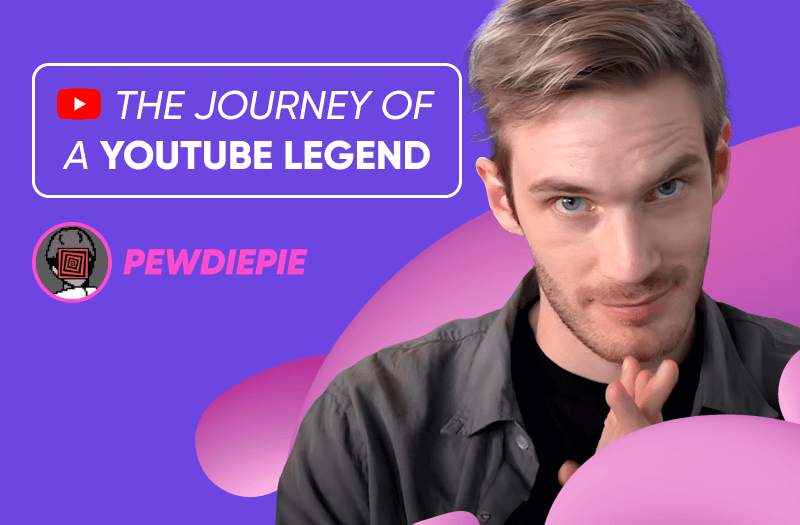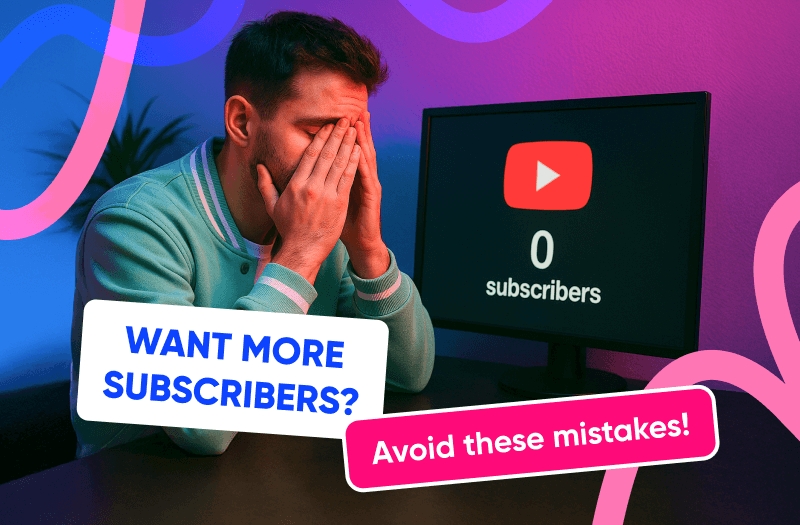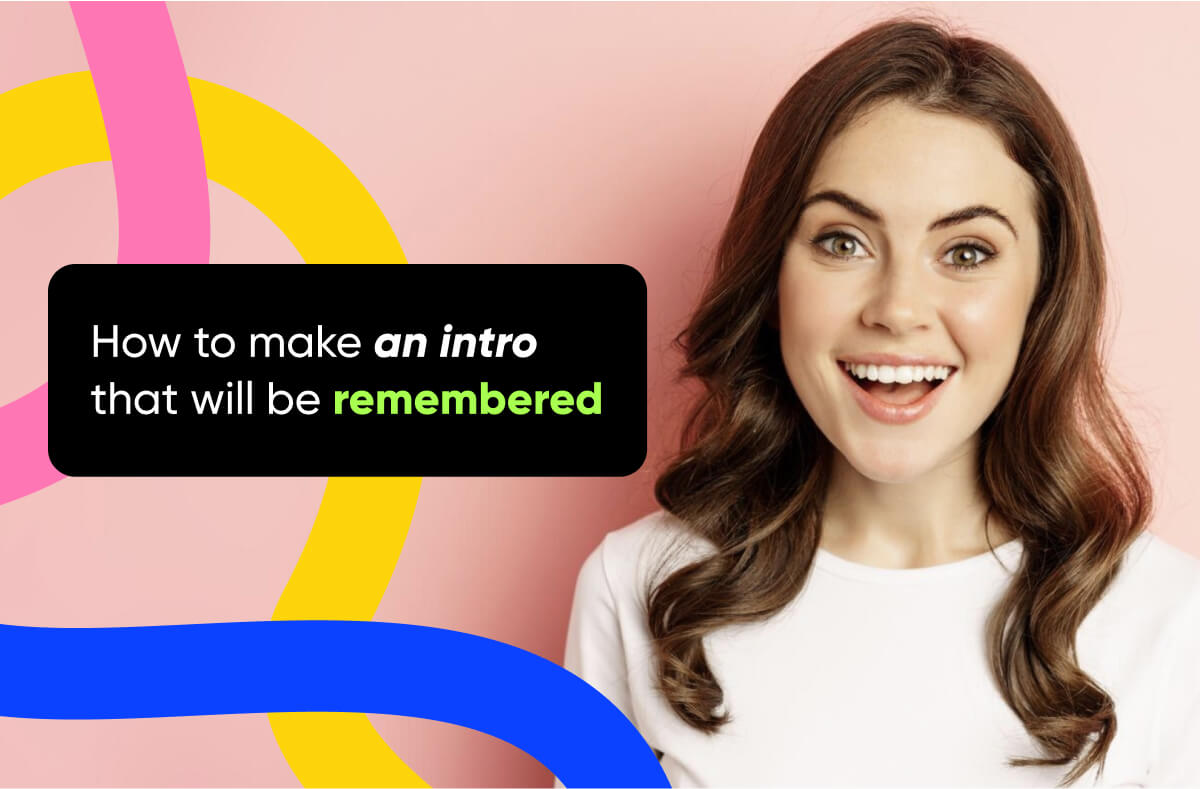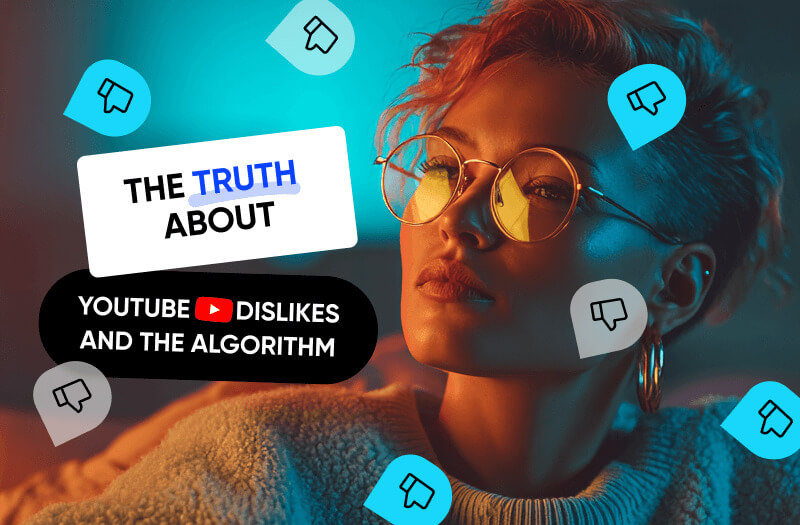
For creators and audiences alike, PewDiePie’s name is at least familiar. But if you think Felix Kjellberg’s success has been about sticking to one formula, you’ve missed the point entirely. PewDiePie’s journey isn’t about "Let’s Plays," commentary, or even vlogs. His channel matured along with him. Let’s break down his transformation not as fans, but as creators looking to extract hard-earned lessons from a channel that redefined what “creator longevity” looks like.
The Era of Gaming
PewDiePie’s career had started 14 years ago with one Minecraft video, where he was having fun with his friend and speaking mostly in Swedish. He continued releasing Call of Duty (being impressively good at it as well), but his channel didn’t take off from the start.
The Let's Play genre wasn’t as common as it is nowadays and it wasn’t as popular among audiences. So what changed? What helped him move forward?
Amnesia
What games were played back in the day? Minecraft and shooters, of course. That's what's gained popularity and that’s what was in demand. However, did anyone play horror games? Not exactly. So, PewDiePie took that niche with himself delving into the Amnesia game.
Early YouTube was a platform built on raw, personality-first content. And Felix’s over-the-top reactions were peak entertainment at the time. Later on he recalls that he had always wanted to play the game by himself, but at the time was too scared of horror games and recording himself gave him the courage to advance at the game beyond his deadpoint. He didn’t expect that his channel would blow up.
On February 17, 2011, he released a video thanking his audience for 2500 subs. The boy excited to gain thousands didn’t know that he stepped on a path that would lead him to millions. Back then it was a fun hobby, he was still in college and putting his life outside YouTube before his subscriber count.
Fridays with PewDiePie
On September 3rd, 2011, PewDiePie uploaded his first Fridays with PewDiePie formatted video. As he expressed at the beginning of it, he wanted to gain a closer connection with his subscribers and communicate with them.
As his audience count grew, he confessed it was becoming more difficult to keep up with the comments and he still craved to have that personal connection. So he delved into Q&A format, and that was the day he announced he will have his first merch.
He turned audience inclusion into a format, leaning into community-building, brofists and inside jokes, which was, at the time, a novelty concept. From then on, Fridays with PewDiePie became a classic and beloved format.
Branching Out Beyond Horror
Horror games brought him popularity, but PewDiePie didn’t want to be known solely for being ‘an Amnesia guy’. Slowly, he started branching out into very niche and very obscure games that nobody else on YouTube played at the time. That included ‘barbie games’, different flash games, custom modes for Amnesia, Happy Wheels, Parappa the Rapper and so many more.
Montages
Another unique feature of PewDiePie’s channels (that drew a lot of attention and subscribers in) was the fact that he kept doing funny montages of his content. Felix cut out the best parts and edited them in a very entertaining way, which is why, even now, those videos are among the most popular videos on his channel.
At the time (in 2011-2015) such montages were a novelty, which was banked on and then grown. It helped him build his brand even further even when he wasn’t really trying to. As he later revealed, it was just what made him happy, so he kept on doing it.
Collaborations
Around the time his popularity skyrocketed, PewDiePie started to actively collaborate with other content creators, mostly just his close friends like CinnamonToastKen. With his popularity growing even more, Felix started collaborating and promoting other people’s content even more.
Vlogs
Frequent vlogging has also become a part of the equation with PewDiePie releasing moments of his daily life such as his girlfriend at the time, Marzia, what he is doing, updates on his college and job and so on. His vlogs had mostly calm pacing with a few chaotic moments that popped up.
These videos weren’t as popular as his gaming videos, and yet he enjoyed making them and continued releasing them, despite them not being as big of a hit among his audience.
The Era of Commentary
Around 2016, the saturation point hit. Gaming content was everywhere, and PewDiePie peaked with his growth hitting somewhat of a stall. Enter the commentary phase. Or, as some would like to call it, the controversial phase.
He didn’t stop playing games completely, as it was still something PewDiePie admitted to actively be enjoying, he just switched his content around and proved that he could be equally as entertaining in other niches.
At that time he started shedding the gaming-first identity and leaned into personality-led commentary. There came meme reviews, book reviews, countless new discussion formats, YouTube drama, philosophy, etc. It was still deeply PewDiePie, but something his audience from 2011 wasn’t quite used to. PewDiePie himself addresses his approach to YouTube and the decline in views in 2016. And, moreover, he discusses many YouTube-specific problems with no fluff in other videos.
AIR Partners Hit 125+ Billion Views
Looking for a boost? Get an expert YouTube channel audit to unlock hidden growth spots!
Pushing Too Far
With more and more popularity, came more and more work. PewDiePie was trying to push himself to release videos as often as he could, while also moving around, and additionally filming episodes for the Scare PewDiePie show (that later got cancelled).
Later on, he called this time to be the most stressful time in his life and all he needed was a break, but he was afraid that his fans would not understand him if he quits for a bit. Up to that point he hasn't taken a long break and the video below was his first time in years at doing just that.
Fridays with PewDiePie: Rebranded
With the era of commentary, came a different persona with a different voice. Here, Felix reflected onto his past years and showed how he changed. Fridays with PewDiePie, essentially got rebranded later on into you laugh you lose format and branched out into different other formats, which included book reviews and just talking about serious issues with his audience.
Controversies
In January of 2017, PewDiePie was caught in one of the more serious of his controversies with Fiverr. As he reflects on it now, looking back he thought that the edgy dark humor jokes were funny, so he proceeded to make videos about making them happen. He mentions that it wasn’t mature of him at the time and that he was trying to push the boundaries of what’s allowed and what’s not.
YouTube Fallout and Adpocalypse
Another major controversy sparked in March of the same year. It started with one livestream and a bridge, which later allegedly escalated into a full on adpocalypse. As PewDiePie himself says, he wasn’t the one solely responsible for making it happen. The consequences for his edgy jokes were losing his partnerships, losing a show that he worked hard on (Scare PewDiePie), and losing ‘Google Preferred’.
He responded that, at the time, YouTube was putting ads on all sorts of ‘bad content’, which led to companies pulling out of the platform. Felix acknowledged that what he said and did was wrong, his audience forgave him, and he moved on.
PewDiePie vs T-Series
In 2019, another controversy sparked. PewDiePie, some say jokingly, started the ‘beef’ with an Indian company T-Series for a spot on number one. The meme was everywhere, it had taken over banners, online spaces, and was a frequent guest at Felix’ channel. He created 2 diss songs aimed at T-Series that also criticized how companies have an easier time growing on YouTube because they have a lot of money, resources, while solo creators have to work disproportionately harder. That in itself had earned him 100 million subscribers.
The meme ended with an unfortunate string of events. As Felix says himself, in a giant pool of subscribers, there are ‘bound to be a few degenerates’. Some people ruined a World War II memorial with spray paint for the meme (which he saw removed, donated to the park, and disavowed these actions). But then, an even worse event happened: the Christchurch shooting, where the shooter said ‘Subscribe to PewDiePie’ while committing the act of terror.
Out of respect to the victims, out of respect for those affected he ended the meme for good.
The Vlog Era
The drama passes, and PewDiePie switches his content around once again. But it wasn’t because he wanted to stay relevant. It was clear that he was burned out, and his audience was growing up with him. Felix did something few creators dared to: he pulled back.
He retired from posting videos every single week or day, he was honest with his audience about this and was tired. He married his longtime girlfriend and had a son. With less time to spare, he reduced output, now focusing on lifestyle videos or talking about the things he currently cares about such as drawing, climbing, and attending the gym.
His recent Japan vlogs are mellow paced and wholesome, which is a stark contrast to what his channel was just a few years ago, and even more different than when he started.
Lessons Learned
PewDiePie’s story is a story of maturing, growing up with his audience. He started with platform-native content that was still unique enough to draw attention. He shifted into commentary when he got tired of playing games and didn’t want to solely be known as ‘the gamechannel guy’. He vlogged from time to time because it was something Felix clearly enjoyed.
And, most importantly, PewDiePie knew when to slow down because of a burnout. If you want to be relevant for years to come, you need to understand him and his mindset and how to evolve without copying Felix word for word.
Want to break down your channel's next evolution? That’s what we do. We help long-term creators audit their trajectory, not just their thumbnails. Reach out and we’ll help you strategize the next phase of your growth with the same long-view lens.






![YouTube Updates [June 2025] YouTube Updates [June 2025]](https://air.io/storage/s7KnuZpnZfT7TgWtEoY6a4VU3f9bdS3AMZSlsibO.jpg)
